The National Scouting Museum at Philmont Scout Ranch
by Maxine Carter-Lome
Founded in 1910 by Chicago publisher William Boyce, and inspired by and modeled on the Boy Scout Association established by Baden-Powell in Britain in 1908, the Boy Scouts of America (BSA) introduced structure and organization to outdoor-oriented youth groups and activities. With its aim on character development, citizenship training, personal fitness, and hands-on life skills, the BSA quickly became the largest youth organization in the United States in the first decades of the 20th century. Scout Law-“A Scout is trustworthy, loyal, helpful, friendly, courteous, kind, obedient, cheerful, thrifty, brave, clean, and reverent”-was the moral compass for generations of young men, who wore their uniforms and badges with pride.
In over a century of history, the BSA as an organization has evolved to keep pace with the times, but the Scout’s core principles remain the same, even in the face of its biggest change to date with the impending 2019 admission of girls. The BSA program, formerly known as the Boy Scouts of America, will be officially renamed ‘Scouts BSA’ in 2019.
This past September the Boy Scouts of America officially opened the doors to the new National Scouting Museum at Philmont Scout Ranch in New Mexico. This 19,500-square-foot facility is now the official home of the Boy Scouts of America, and the keeper of its rich history.
The National Scouting Museum – Philmont Scout Ranch combines the National Scouting Museum, previously located in Irving, Texas, and the Philmont Museum – Seton Memorial Library, bringing over 600,000 artifacts under one roof to tell the story and preserve the legacy of the Boy Scouts of America, and the history and culture of northern New Mexico, the greater Southwest territories, and regional Native American tribes.
In a phone interview with Museum Director (and former Scout) David Werhane a week after the Museum’s official opening, we learned more about The National Scouting Museum and its collection.
Tell us about the Museum:
We’re a combination of two museums coming together so we have a multitude of items in our collection, starting with national scouting memorabilia, including books, merit badges … dating back to 1910, which includes artifacts from the founding members of the BSA – Ernest Thompson Seton, Daniel Carter Beard, and Lord Baden-Powell, as well as James West and William Boyce. And, a large number of Order of the Arrow objects-a service arm of BSA dating back to 1915-that highlight the membership and service of that group as it relates to the BSA.
We also have a large number of different collections, including the Ernest Thompson Seton collection that was started in 1967 and contains over 16,000 books and periodicals from his personal library, including his journals for the “Woodcraft Indians,” a youth organization that pre-dates the BSA. Also part of the Seton collection is approximately 3000 pieces of his personal artwork including such paintings as Triumph of the Wolves and The Pursuit.
Werhane goes on to share that the Museum is also the rich repository of collections, art, and objects that focus on Native American cultures of North America, including clothing, regalia, weaponry, baskets, pottery, and textiles; a historic collection of items found on the property as well as throughout northern New Mexico; a collection of Santos, Bultos, and Retablos figures used in Catholicism; and original paintings and drawings from Beard, Baden-Powell, and other notable artists that worked with the BSA, and thousands of other items.
What is the story you are looking to tell with these various collections?
The history of scouting and its founders, the history of northern New Mexico from the early 1700s through 1950s, and showcasing the art of Naturalist and Co-founder of the Seton Memorial Library, Ernest Thompson-Seton, through his library of over 25,000 books and periodicals covering everything from Native American culture to natural history, the history of southwest New Mexico, and the Philmont Scout Ranch.
What are some of the more unique items in your collection?
We have items belonging to Kit Carson; the first Eagle Medal awarded to a scout, Arthur Eldered; Commander Jim Lovell’s Eagle Medal and Palms; “Our Lady of Sorrow,” a Boltos carving that dates back to the early 1600s from Spain and was used in Jemez-Pueblo; a Model T and Model N found on the property; and objects from our Ponil Canyon archeological site, which has unearthed artifacts from Native American culture dating back to 365 AD.
To complete our collection for the BSA portion, we are looking for honor medals awarded to scouts during WWI. The Scouts had rich history during this period – fundraising, building gas masks, helping the Navy with communication as advanced lookouts, and acting as the primary messenger service for the Federal government. When messages needed to get out quickly they gave it to the Boy Scouts.
Also, we are seeking some of the earliest merit badges from 1910-1930, any original art from our founders (Seton, Powell, Beard), and anything from the first seven years of scouting (1910-1918).
What are your plans for the Museum going forward now that it has opened?
Continue to work on increasing the quality of our exhibits. We are also actively involved with several outreach initiatives, including Scouting Memories, an online archive of stories by Scouts about how scouting impacted their lives – our outreach into the organization to help our Scouts learn to preserve and present the history of our organization, and history in general. We offer a summer Conference Summit on how to a scout can become their unit’s historian, how to preserve items, and curate an exhibit.
Tens of millions of young men and women were impacted [by Scouting] and grew into leadership roles. Most will say that what they learned in Scouting has stayed with them throughout their life, so you could say our legacy is our country.
The museum is open to the public daily from September 1 – April 30, 9 a.m. to 5 p.m.; May 1 – August 30, 8 a.m. – 5:30 p.m. For more information, visit philmontscoutranch.org.


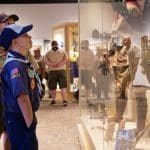

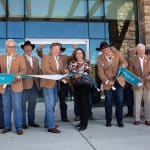
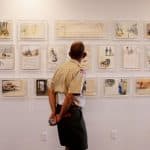
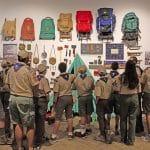
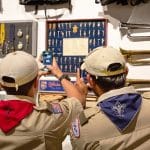

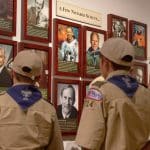
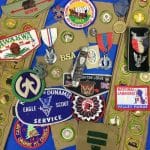

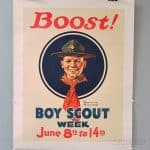
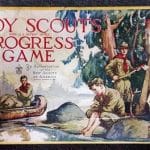





Related posts: